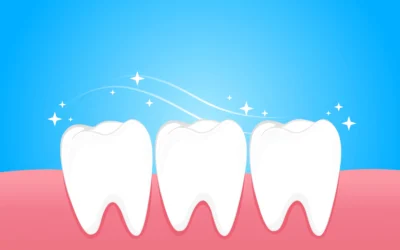Let’s start with the most obvious similarity between these two dental procedures: Nobody wants them. There are plenty of things you would rather do in an afternoon than hang out in a dental office getting a filling or root canal. But we don’t always get what we want.
What Are They?
Fillings
Fillings are, simply, a filling for the space caused by cavities or decay. If the dentist spots a cavity, they will remove the damaged tissue and fill it with a material that will prevent further decay. The filling material will range in price and durability depending on what it is. Fillings can range from composite resin to higher-grade porcelain.
Root Canal
As the name implies, a root canal digs deeper into the root of the tooth, while a filling is for a cavity closer to the surface. Sometimes decay, if left untreated, will go deeper into the root of the tooth. If that happens, the dentist will need to drill deeper into the root of the tooth to clean out the infected pulp of the root and fill it. This procedure preserves the outside of the original tooth but cleans out the decayed sections.
How Are They Done?
The process is pretty similar for both of these procedures, your dentists will just dig deeper with a root canal. For both fillings and root canals, you will be numbed in the area where the dentist will be working. Then, the dentist will clean out the decayed matter and replace it with a filling. The root canal goes deeper, so the anesthesia will also be a bit stronger. The recovery process will be a bit longer with a root canal than with a filling as well, but both are relatively easy.
Telling the Difference
Both of these procedures are caused by decay, and dental decay usually means pain. But there are different kinds of pain and signals that your body sends. Paying attention to your body’s signals will help you give the dentist better information and help you feel better prepared for treatment.
Fillings
Fillings are often the first step in dental repair and treatment, so the signals are more subtle. Dark spots are often an indication of a cavity, so book a dentist appointment as soon as possible if you spot one. There might be a pain, but there sometimes isn’t. If you notice that food is frequently getting stuck in the same nooks and crannies, then a cavity might be the reason why, or at least that is a spot where a cavity could likely occur.
Fillings are also used to repair fractured or cracked teeth. These repairs are important because it creates a seal that prevents infection or decay.
Root Canals
When you ignore the signs of a cavity that could have been treated with a filling, you may end up needing a root canal. If there is a sudden surge in pain or sensitivity to hot or cold, then that could be a sign of a deeper infection in the tooth.
While a cavity might cause a small dark spot on the tooth, if the infection has gotten to the core of the tooth, the entire tooth might appear discolored. That is a clear sign to get into a dentist quickly, using a dental urgent care center if necessary.
Other signs that should get your attention immediately are swollen gums or loose teeth. This means the infection is getting worse and you could risk losing the tooth if you don’t get it cleared up right away.
Prevention
Ideally, you won’t have to choose between a filling or a root canal because you can avoid both! While the symptoms and procedures might be different, the path of prevention is the same for both! You know what to do, but it is worth a quick review:
- Brush your teeth and tongue twice a day, hitting all the surfaces and paying attention to the gum line.
- Floss your teeth once a day.
- Use a mouthwash at least once a day.
- Drink plenty of water! Water is a wonderful “rinse cycle” for your teeth, cleaning out food particles that could cause decay if left behind long enough.
- Munch on raw fruits and vegetables. These are “nature’s toothbrushes” and can strengthen and clean your teeth regularly.
- See the dentist! Regular dental checkups mean the dentist will be aware of any changes to your teeth, even without an x-ray. A basic dental exam will identify soft spots that could become future cavities. This helps you be aware of those trouble areas as you care for your mouth. The chances of you needing a root canal are almost nothing if you are going to the dentist regularly. They will help you stay on top of it!
We would all much rather win a trip to Disneyland than a trip to the dentist, whether it be for a filling or a root canal. But our mouths are an important part of our daily life and overall health. And sometimes they need a little help to stay healthy. Prevention is ideal, but we do the best we can, and sometimes a dentist is needed to clear things up, patch you up, and send you on your way with healthy teeth.



